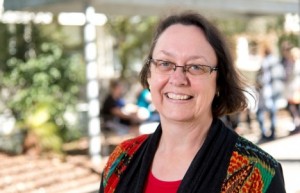As Queensland Schools reopen to all students from today, Professor Donna Pendergast, Dean and Head of the School of Education and Professional Studies shares some advice.

Professor Donna Pendergast
“The COVID-19 pandemic has been a profound experience for every person – no matter their age — we are all experiencing uncertainty and rapid change. We should be mindful of this in our interactions as we return to a certain semblance of ‘normal life,’’ she said.
“As they reopen to students, schools will not be exactly the same as before. The uncertainty of how schools will operate and for how long they will remain in this mode remains unclear. So, the new normal will continue to be a different reality.
“Learning at home has been experienced uniquely for each student and their learning achievement will also vary, despite the excellent work of teachers.
“Some will have thrived academically, especially those who are effective at self-regulation. Others may not have progressed at the same rate. Returning to school will enable teachers to assess student learning and progression.”
Considerations for students
- School will not be exactly the same, and with social distancing measures in place for adults, the experience of schooling will be affected through changes to previously established routines, the absence of many extracurricular activities, and more. There is potential for anxiety and stress as students adjust to these changes — just as they have adjusted each year to different classes, teachers and schools. They need reassurance that schools are safe places for them to be and the new routines and practices are in place to achieve this. Extra support is needed to empower students to cope with these adjustment changes, and to acknowledge this is indeed a time of change.
- Students are likely to feel the pressure of missed learning — whether real or perceived, and this might lead to anxiety, which negatively impacts the capacity for students to learn effectively. Shifting to a level of acceptance and away from this sense of vulnerability is vital.
- Students have experienced a loss of face-to-face contact with friends and their sense-of-belonging-at-school. While many have been able to engage with various forms of media to keep connected, there is nothing that replaces being together.
- Above all, students are looking to their adult role models for a sense of balance and to see how we are coping with this transition.
Considerations for parents
- This may be a welcome time for some parents — some may be juggling children at school, at home learning, and their own paid and unpaid work. Be realistic about what can be achieved. The staggered return was designed to ensure those years levels at the most crucial learning stages are back in a school learning environment first. This is a message that can be shared with students so they understand why this is occurring.
- Parents will be required to navigate all of these changes and more, such as the physical distancing at school pickup and drop-off while maintaining connections with other parents and teachers and enabling their children to transition back effectively. Re-establishing now modified routines is the key. Bed time, wake up time, planning school lunches, access to IT, homework — these need to be consistent and aligned with supporting learning and engagement and highlighting the importance of learning, despite other uncertainties that might be part of the household. Parents should display their resilience and adaptability to set the tone for their children.
- Be available for discussions with teachers to ensure each unique learner transitions back to school effectively. Wellbeing is at the centre of this connection and if you know how your child is managing and what you can do to contribute, much of your stress will be relieved — and your child will benefit enormously.
Considerations for teachers
- Teachers have been absolute champions as they have created learning in a way never before anticipated, at a pace never before imagined. They have displayed courage, commitment and capability. And they have shown us why they became teachers. They are excited to have students back at school. There is newfound respect many members of the community have for teachers not only for the amazing job they do teaching the next generation but for the enabling role they play keeping the economy flowing. Remaining visible and connected with the community will continue to enhance this understanding.
- Teachers need time to engage in reflective practice as the ‘new normal’ takes shape. The accelerated change that has been experienced is a disruption that will not be temporary or incremental, but is a profound shift for educators. In conversations with school principals and teachers, questions about what worked and why; what didn’t work and why, are on their minds. Quality teaching is at the core of this reflection and displays true professionalism.
“One thing is certain, the ‘new normal’ will continue to evolve beyond the transition back to school, and there will be enduring benefits. By placing student wellbeing at the centre of the transition we ensure that collectively we focus on our young learners getting back to school effectively.”
